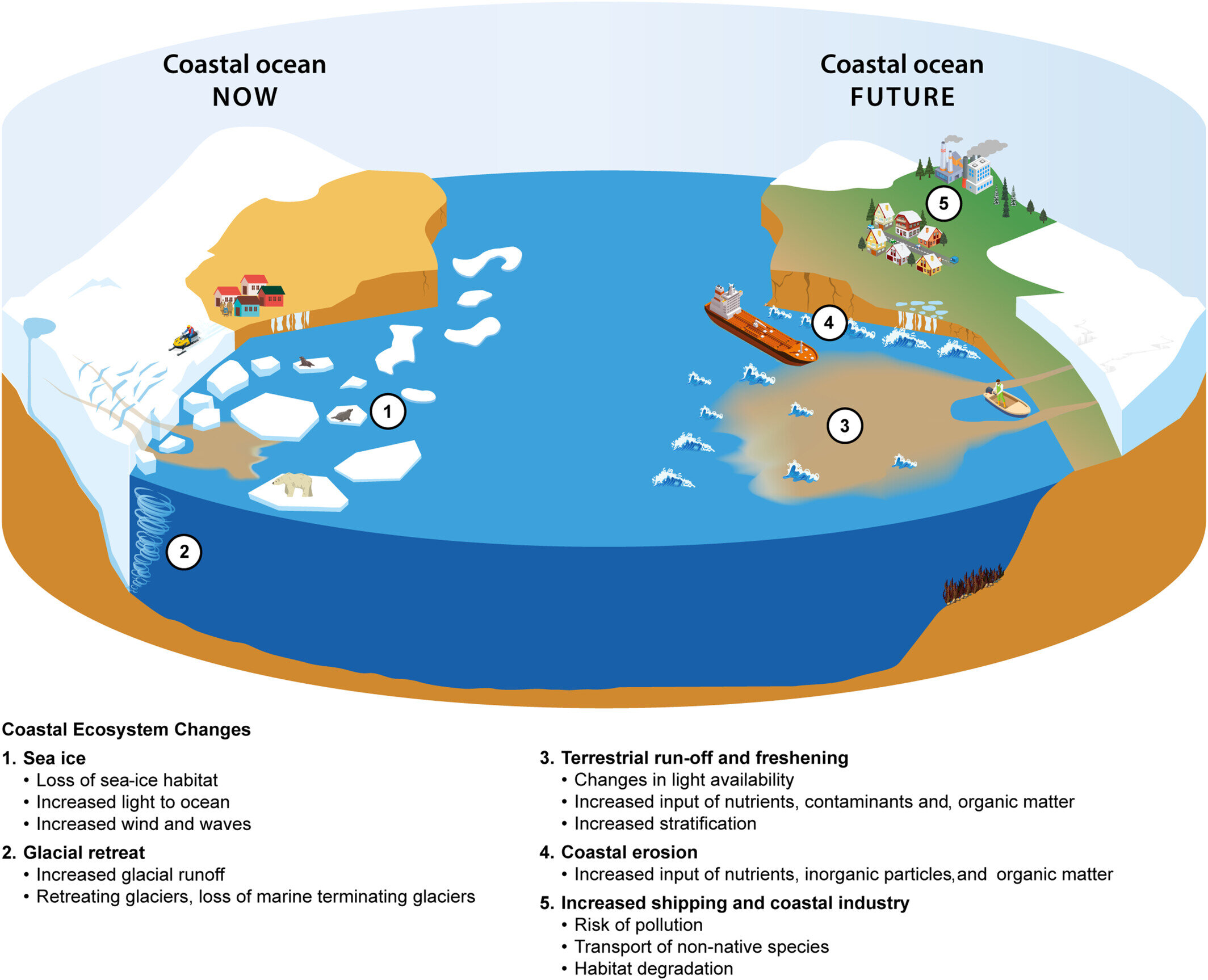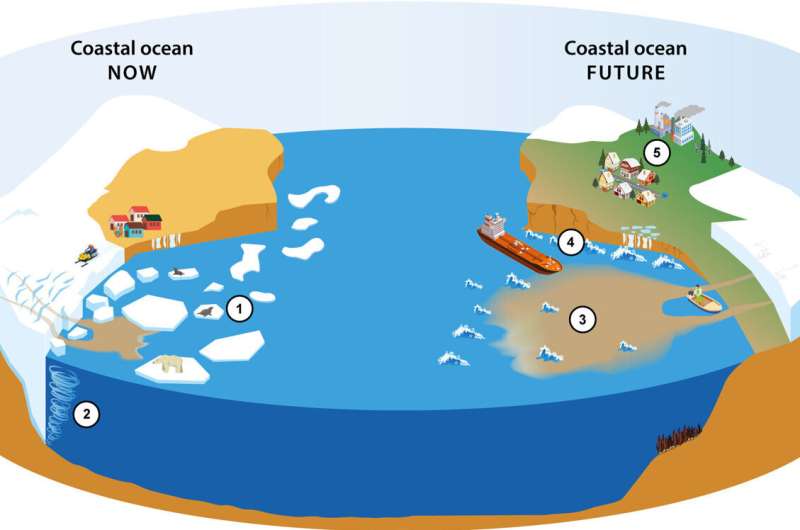

As climate change rapidly transforms Arctic marine systems, the dramatic image of a polar bear struggling on a melting ice floe has become symbolic of the region’s environmental crisis. But scientists argue that coastal Arctic ecosystems are undergoing a complementary set of changes to those in the open ocean.
These changes are intensified by the interaction of land-based and marine transformations, driving significant impacts on both the environment and local communities.
“An increasing number of ecosystem drivers along the Arctic coasts are having broader implications for both ecological and human systems,” the researchers observed.
“The consequences of these changes are greater than what can be quantified in the open Arctic Ocean alone,” says Mikael Sejr, professor at the Institute of Ecoscience at Aarhus University.
With these changes come critical knowledge gaps. Filling these gaps is essential to ensuring that the socioecological systems along Arctic coasts can adapt and remain sustainable in the face of ongoing climate shifts.
The paper is published in the journal Limnology and Oceanography Letters.
More information:
Mikael K. Sejr et al, Multiple climatic drivers increase pace and consequences of ecosystem change in the Arctic Coastal Ocean, Limnology and Oceanography Letters (2024). DOI: 10.1002/lol2.10431
Provided by
Aarhus University
Citation:
Scientists highlight overlooked threats to Arctic coasts amid climate change (2024, October 1)
retrieved 1 October 2024
from https://phys.org/news/2024-10-scientists-highlight-overlooked-threats-arctic.html
This document is subject to copyright. Apart from any fair dealing for the purpose of private study or research, no
part may be reproduced without the written permission. The content is provided for information purposes only.